Jinfo Mountain is located in Nanchuan District, Chongqing Municipality, China. It is a national 5A-level tourist attraction and a World Natural Heritage site. The planned area of its scenic spot is 441 square kilometers. Jinfo Mountain features a typical tableland karst landform, consisting of 108 peaks in three mountains: Jinfo, Baizhi, and Qingba. The main peak, Fengchui Ridge, stands at 2251 meters, making it the highest peak in the Dalou Mountain Range. Here, the mountains have a unique and steep terrain, with abundant natural landscapes such as cliffs, strange peaks, karst caves, valleys, ecological stone forests, and springs and waterfalls. There are also magnificent meteorological landscapes like ice and snow, clouds and mist, and sunset glow. The scenic area is rich in animal and plant resources, including national key protected plants such as Cathaya argyrophylla, known as the "giant panda of plants", and national key protected animals such as white-cheeked black leaf monkeys and Guizhou golden monkeys.
Historical Culture
The Buddhist culture of Jinfo Mountain has a history of over a thousand years. Buddhist temples were built in the Tang Dynasty, and Buddhist culture flourished in the Ming and Qing Dynasties. It declined in the Republic of China period and revived again in the late 1980s. Now, it is a famous Buddhist sacred place in the Sichuan, Chongqing, and Guizhou regions.
During the Song Dynasty, Longyan City on Jinfo Mountain was built from the third year to the fourth year of Baoyou in the reign of Emperor Lizong of the Song Dynasty (1255 - 1256). In the sixth year of Baoyou, Mongke, the Great Khan of the Mongol Empire, led his army to attack Sichuan. The advance troops attacked Longyan City twice, but were defeated by the garrison soldiers. The Song army successfully resisted the Mongol army, and the garrison generals were rewarded by the emperor. The remains of Longyan City cover an area of 2400 square meters and are now a Chongqing municipal-level cultural relic protection unit.
Caves such as the Ancient Buddha Cave in Jinfo Mountain contain rich sulfates and nitrates. The local area has traces of "nitre refining" dating back at least 700 years, providing evidence for China's gunpowder production.
In the 1940s, the Jinfo Mountain area served as one of the logistics bases during the War of Resistance against Japanese Aggression, providing support such as drug production and research, and air raid early warning for the war.
Main Attractions
Jinfo Temple
Located in the northwest of the scenic area, it is one of the largest Tang Dynasty-style temples in southwest China. The original site was in the southeast of the Zhongshan Plateau on the top of the mountain. It was first built in the Tang Dynasty and was the first among the four famous temples in Jinfo Mountain. In 2014, it was relocated to the southwest of Fenghuang Temple and rebuilt and consecrated. It covers a total area of over 10,000 square meters, with buildings such as the Bell and Drum Tower, Heavenly King Hall, Main Hall, Seven Buddhas Hall, and Sutra Pavilion. It is a famous Buddhist sacred place in the Sichuan, Chongqing, and Guizhou regions.
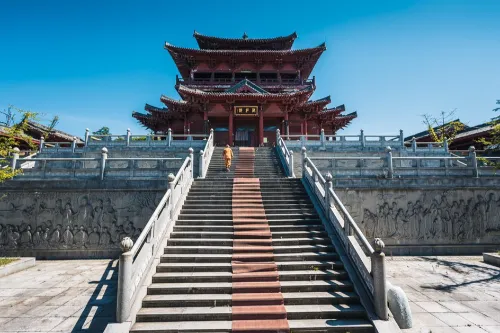
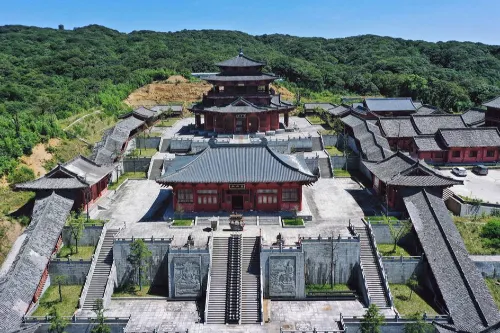
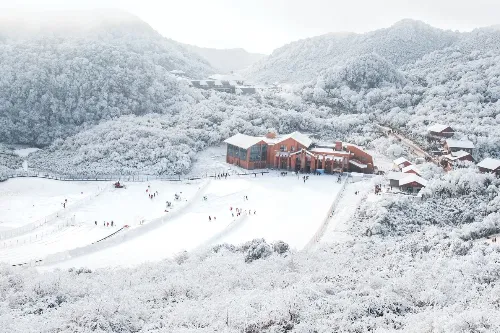
Ancient Buddha Cave
The Ancient Buddha Cave is one of the core attractions of Jinfo Mountain. It is about 3000 meters long, with an open space inside. The stalactites are in various shapes, some like Buddhas, some like animals, vivid and lifelike. There is also an underground river in the cave, with clear water that presents a magical color under the light. The temperature in the cave is always around 16-18℃, making it a good place to escape the summer heat.
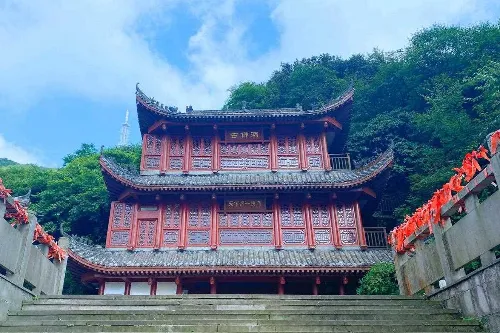
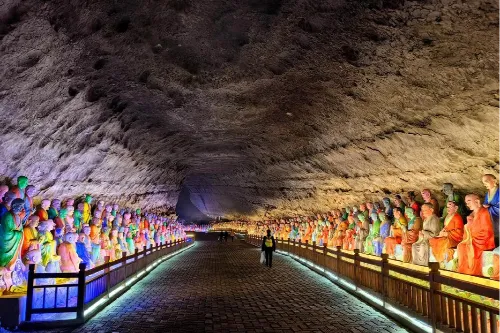
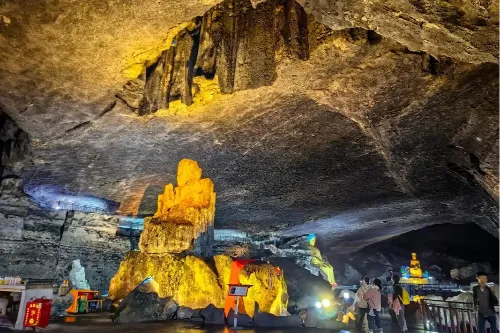
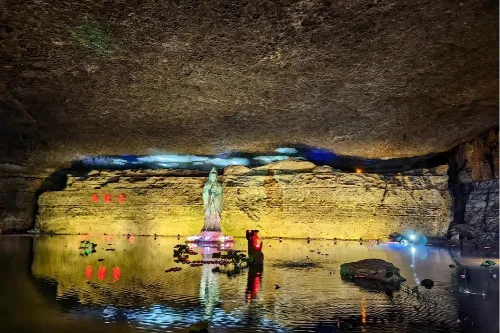
Bitan Valley
Bitan Valley is a canyon approximately 3 kilometers long. Inside the canyon, streams gurgle, the pool waters are emerald green, the vegetation on both banks is lush, and the air is fresh. Along the way, there are multiple green pools and waterfalls of varying sizes, among which "Yixian Spring" is the most famous. The spring water gushes out from the cliffs, forming a beautiful scenic sight. There is also a walking plank road in the valley, allowing tourists to stroll along the plank road and enjoy the canyon scenery.
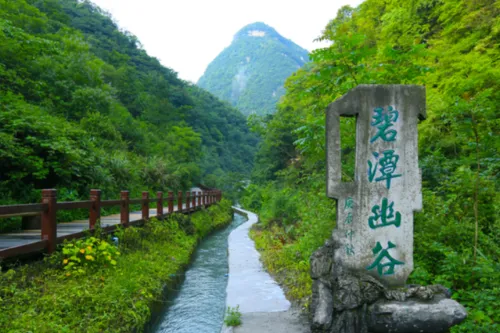
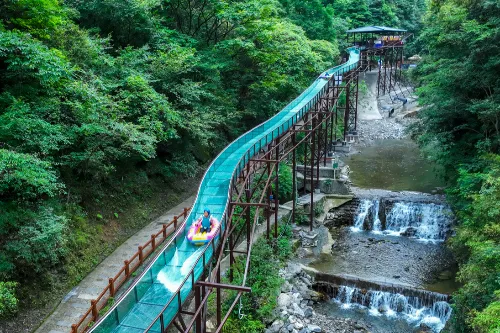
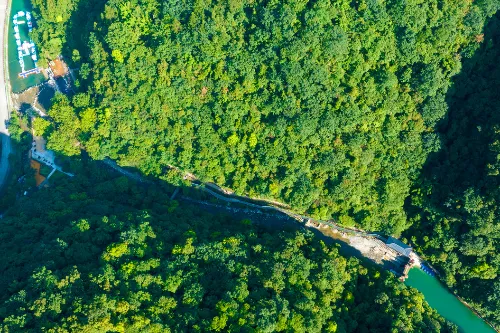
Cliff Plank Road
The Cliff Plank Road is built on the cliffs at an altitude of about 2000 meters, with a total length of about 3.5 kilometers and a width of about 1.5 meters. Some sections are suspended glass plank roads. Walking on the plank road, you can feel the thrill with the abyss under your feet, steep rock walls beside you, and rolling mountains in the distance. There are several viewing platforms along the plank road, where tourists can stop to look into the distance and enjoy the magnificent scenery of Jinfo Mountain.
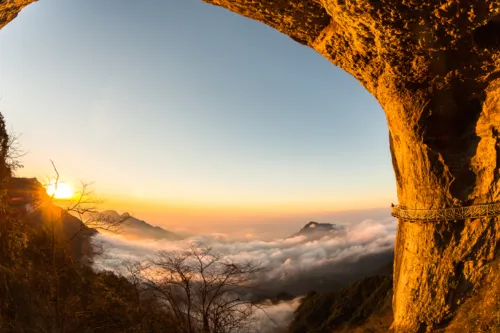
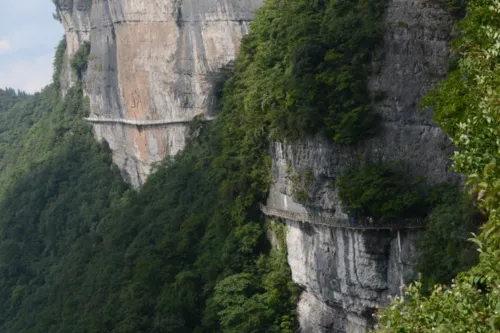
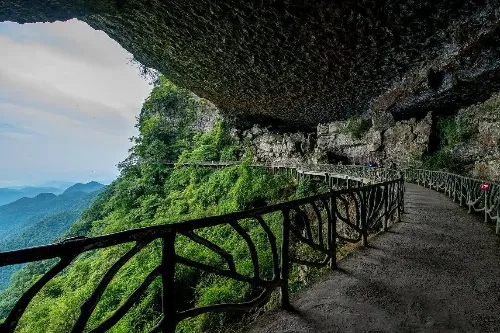
Golden Turtle Facing the Sun
Golden Turtle Facing the Sun is one of the iconic landscapes of Jinfo Mountain. It consists of a huge stone shaped like a turtle, which is tens of meters high. Every morning when the sun rises, the sunlight shines on the huge stone, making the whole stone appear golden, like a golden turtle facing the direction of the sun, hence the name. It is an excellent place to watch the sunrise, attracting many photographers to come and take pictures.

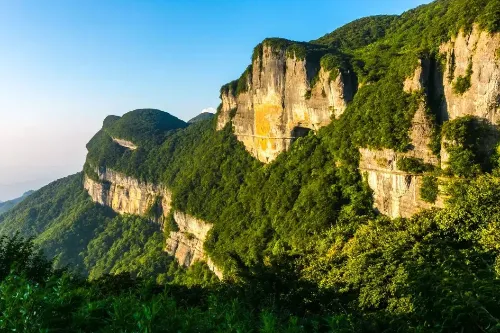
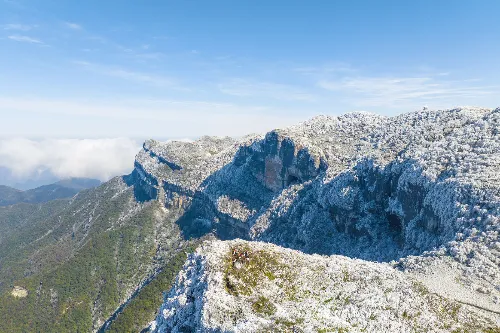
Yaochi Dam
Yaochi Dam is a mountain basin on the top of Jinfo Mountain, with an area of about 0.5 square kilometers. It has a flat terrain, lush water and grass, and is surrounded by mountains. It is said that immortals once made pills and medicines here in ancient times, hence the name. There are several natural pools in Yaochi Dam, and the water in the pools contains a variety of minerals, which have certain health care effects. It is also a good place to escape the summer heat in summer and enjoy red leaves in autumn.
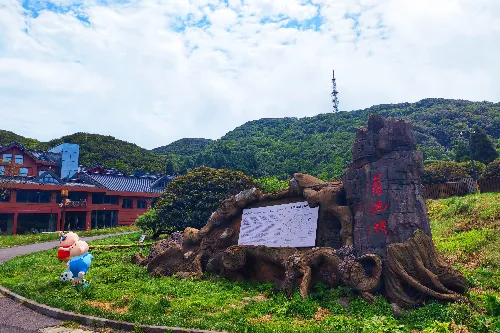
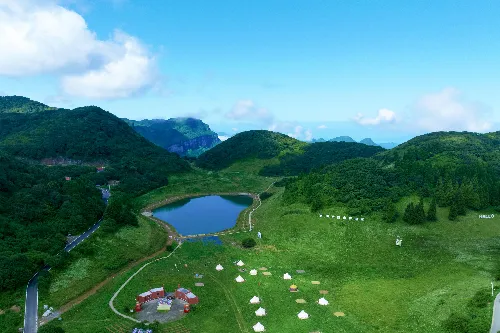
Ecological Stone Forest
In the vast primeval forest, thousand-year-old rare ancient trees coexist with the bizarre stone forest. Stone peaks, stone pillars, stone screens, and stone caves, like wise men hiding in the deep mountains, form a wonderful spectacle of coexistence of stone trees and vine trees, which is full of vitality and unique in the world. It is praised by ecological experts as an "ancient ecological expo park" and a "living textbook" for ecological popular science education.

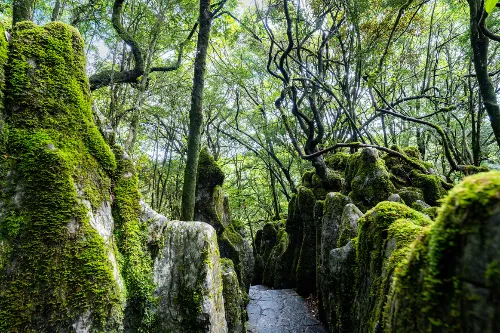
Jinfo Mountain North Slope Cableway
The Jinfo Mountain North Slope Cableway was built in January 1998 and put into trial operation at the end of that year after 12 months of construction. The Jinfo Mountain North Slope Cableway adopts German Siemens technology and is designed by the Beijing Crane Research Institute. It is a double-load reciprocating cableway with a total length of 1056 meters, a vertical drop of 525 meters, and a maximum inclination angle of about 45 degrees, making it the steepest cableway in Asia. The completion of the Jinfo Mountain North Slope Cableway has turned the "natural barrier" of Jinfo Mountain into a "thoroughfare", greatly improving the convenience and speed for tourists to go up the mountain, so it is called the "airbus" of Jinfo Mountain by tourists.
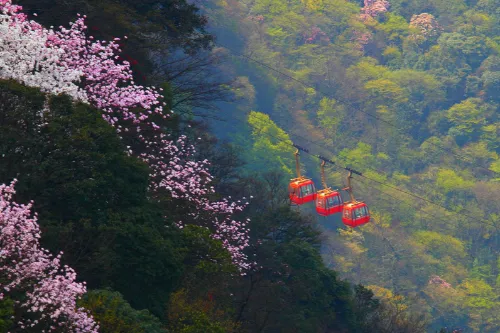
Tour Routes
Hiking enthusiasts can go up from the West Gate; friends who like self-driving tours can enter from the South Gate, but the South Gate requires a toll of 200 yuan per car, and the parking area is limited; the North Gate is the most traditional route. Recommended routes include entering from the West Slope - bus - cableway - Qianniuping - Ancient Buddha Cave - Yaochi Dam - Cloud Walkway - Swallow Cave - Golden Turtle Facing the Sun - cableway - bus - exiting from the West Slope; you can also visit in the order of Jinfo Mountain West Slope Tourist Center → Bitan Valley → Shuangye Bridge → Mo Huitou → Golden Turtle Facing the Sun Viewing Platform → Swallow Cave → Yaowang Pool → cableway bus to the West Gate.
Travel Suggestions
- To enjoy the azaleas, you can visit in late April. The flowering period lasts from mid-April to late May.
- There are accommodation options within the scenic area, but staying at hotels in Tianxing Town, which is one kilometer outside the scenic area, allows you to enjoy hot springs in the evening.
- Some sections of the scenic area have no supply points, so it is recommended to bring some snacks and water with you.
- Arranging two days for the trip allows you to enjoy the beauty of the scenic area more fully.
- The temperature on the mountain is relatively low, so even in summer, you need to bring a coat. In winter, you must take measures to keep warm against the cold.
- Some sections of the Cliff Plank Road and Glass Plank Road are quite thrilling, so tourists with acrophobia are advised to proceed with caution.
Matters Needing Attention
- Pets are prohibited from entering the scenic area.
- When walking on dangerous sections such as the Cliff Plank Road, pay attention to safety, do not chase or frolic, and do not lean against the railings.
- Some sections in the scenic area are steep. When visiting, pay attention to safety and follow the scenic area's signposts.
- When visiting in winter, keep warm and bring anti-slip equipment. In case of bad weather, learn about the scenic area's response measures in advance.
- When entering attractions such as karst caves, abide by the scenic area's regulations and do not touch the stalactites and other landscapes in the caves.
- Abide by the opening hours of the scenic area and do not stay in the scenic area after it closes.
- Do not enter undeveloped areas without permission to avoid danger.
Transportation
- Self-driving: Chongqing urban area — Yuxiang Expressway — Nanchuan Interchange — Nanwan Expressway — Jinfo Mountain West Exit — West Gate of Jinfo Mountain Scenic Area.
- Public transportation: Tourists from the urban area can take a bus from Chongqing Siguangli Interchange Transportation Hub Station or Chongqing Caiyuanba Bus Station to Nanchuan, then transfer to a bus to Jinfo Mountain Scenic Area.
Opening Hours
Monday to Friday: 8:30 - 17:30 (ticket sales stop at 15:30); Saturday to Sunday: 8:30 - 17:30 (ticket sales stop at 16:00); Chinese legal holidays: 8:00 - 17:30 (ticket sales stop at 16:00). The opening hours of the ski resort are affected by weather and other factors, so it is recommended to consult by phone in advance.
Tickets
The ticket price is 80 yuan, and the sightseeing bus fare is 20 yuan (usually needed for those entering from the West Gate). Children under 1.2 meters (excluding 1.2 meters) or under 6 years old (inclusive), seniors over 65 years old (inclusive), military personnel, and journalists are exempt from tickets. Students and minors enjoy half-price tickets. The package ticket for seniors over 65 years old at the West Gate (including free admission + bus + cableway) starts at 100 yuan.
You can search for the official WeChat public account of the scenic area "金佛山旅游" to get the latest updates or buy tickets online.
Online Booking
Click here to jump to the Trip.com ticketing platform for ticket purchase.


